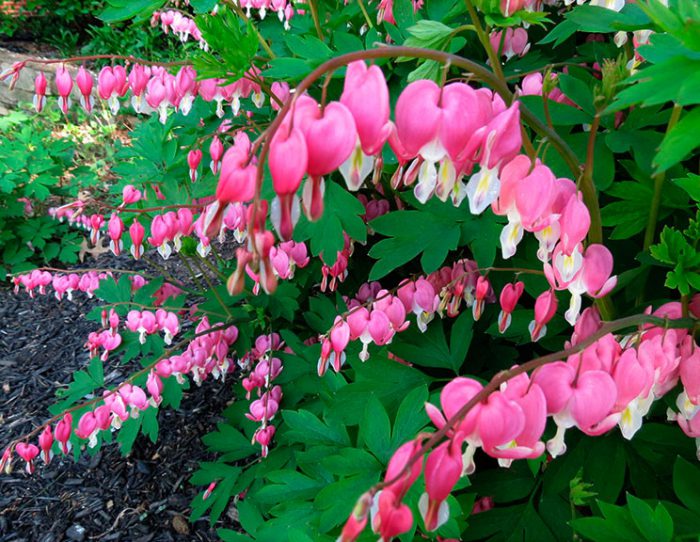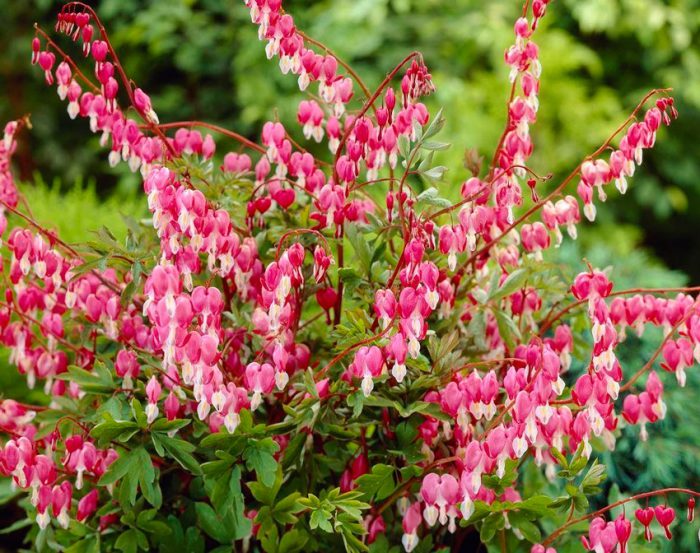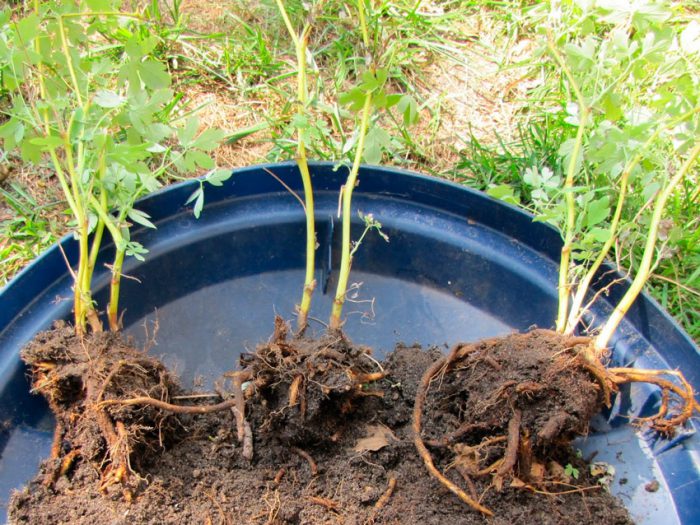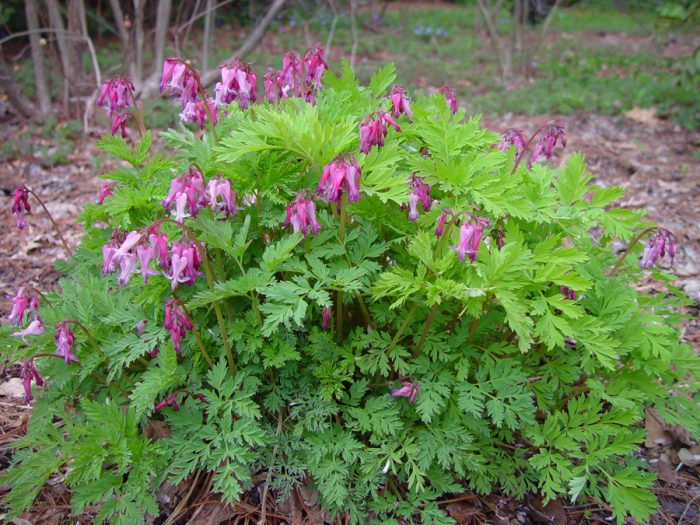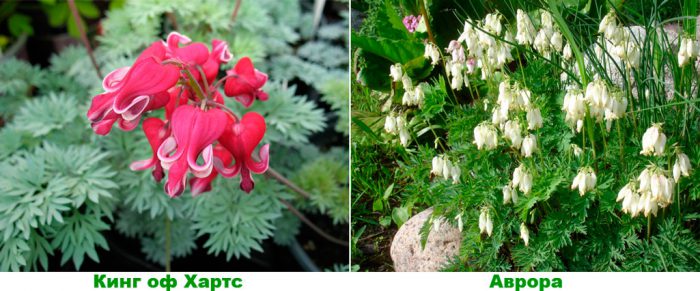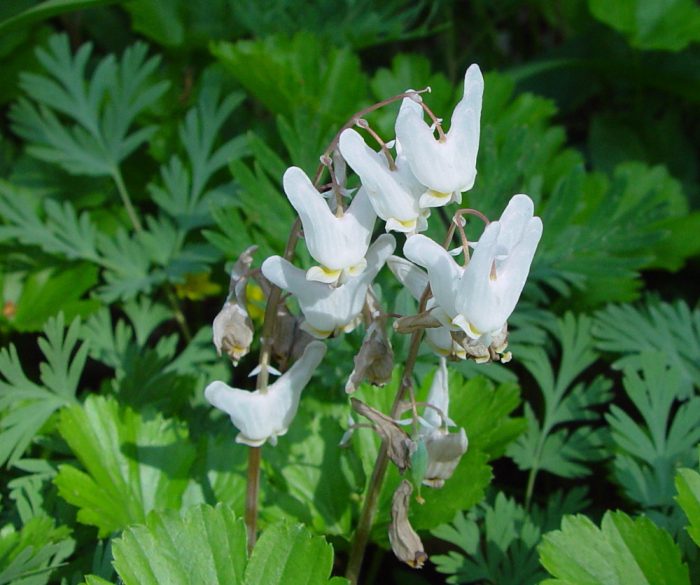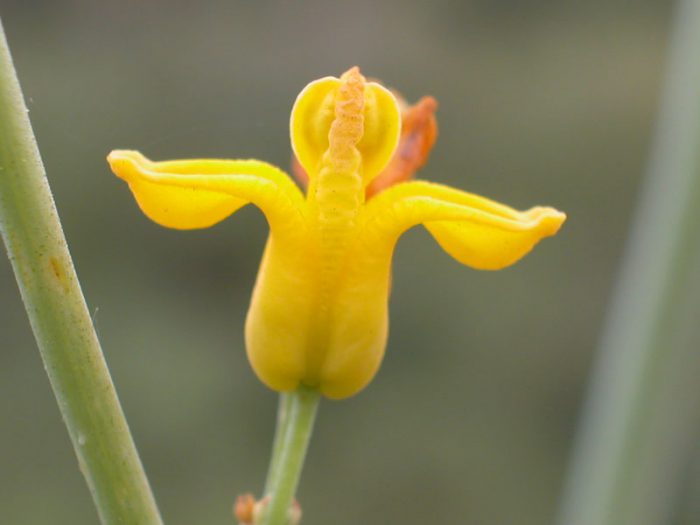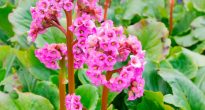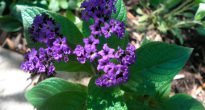The plant dicentra (Dicentra) is a representative of the genus of herbaceous perennials and annuals, belonging to the subfamily smoky, poppy family. Many people know this plant thanks to its unusual flowers-hearts. In France, because of this, the plant is called Jeanette's heart. There is a very old legend, which tells that these flowers appeared in the very place where the heart of unfortunate Jeanette broke, who saw her lover walking down the aisle with another girl. In England, such a flower is called "the lady in the bath". The Latin name of such a plant is formed by two Greek words, namely "dis" - "twice" and "kentron" - spur, as a result of the dicenter it can be translated as "two-spur" or "flower with two spurs". The plant came to European countries from Japan in 1816, while it immediately gained great popularity among aristocrats. Then they practically forgot about the plant, but at the moment the flower is again beginning to be popular with both experienced and novice gardeners.
Content
Features of the dicenter
There are about 20 species in the genus of such a plant, with most of them growing in North America, the Far East, and also in Eastern China. The height of the bush can vary from 0.3 to 1 meter. The plant has a fleshy long rhizome that goes deep into the ground. Its beautiful pinnately dissected green leaf plates have a bluish tint, they also have a petiole. Slightly squeezed flowers are heart-shaped and pale red or light pink in color. Their diameter is about 2 centimeters, and they are part of the drooping terminal arcuate inflorescences in the shape of a brush. The flowers have a pair of spurs on the corolla. The fruit is a box, inside of which are glossy black seeds that have an oblong shape. They remain viable for 2 years.
How to plant in open ground
What time to disembark
The plant is planted in open ground from the last days of April to the first days of May, and even in September.When planting in autumn, it should be borne in mind that the flower should take root well and develop a root system before the arrival of winter frosts. For such a plant, you can choose a well-lit area or located in a small shade. However, in a sunny place, the blooming of the dicenter can be seen much faster. This plant can be grown on any soil, but light, well-drained, moderately moist and nutrient-rich soil will be the best option for it. The soil for planting should be prepared in advance. If you are planting a plant in the spring, then take care of preparing a place for it in the autumn months, and vice versa, if the planting is scheduled for autumn, then you need to prepare the site in the spring. The earth must be dug to the depth of the bayonet of the shovel, while humus should be added to it (per 1 square meter from 3 to 4 kg of fertilizer), then the earth must be spilled with a nutrient solution prepared from mineral fertilizer (20 grams of substance per bucket of water).
How do they land?
The first step is to prepare planting holes for flowers. Their diameter and depth should be equal to 0.4 m, while it is necessary to maintain a distance between the bushes - 0.5 m. At the bottom, you need to make a drainage layer of broken brick or crushed stone. Then a layer of garden soil is poured into it, which must first be mixed with compost. Then you need to lower the plant into the hole and fill it with the same mixture of garden soil with compost. In the event that the soil is too heavy, then it can be combined with sand, and if you add limestone chips to the soil, then the dicenter will only get better from this.
Dicenter care
Watering the plant should be moderate, and you should also systematically loosen the soil surface and pull out weeds in a timely manner. It should be borne in mind that the root system of a flower for normal development requires oxygen, therefore it is imperative to loosen the earth. When shoots just appear in spring, they need to be covered at night, because frosts can destroy them. Water it with soft water. At the same time, during drought periods, watering should be done more often than usual, but it must be borne in mind that excessive watering can cause rotting of the root system. The plant must be fed regularly. At the beginning of spring, it needs a fertilizer containing nitrogen, when it begins to bloom, then there is a need for superphosphate; in autumn, the surface of the trunk circle must be shed with mullein infusion and mulched with humus. If you want to prolong flowering, then you need to promptly cut off the flowers that are starting to fade.
Transfer
The flower does not need to be transplanted frequently, so it can do without this procedure for 5-6 years. After that, it is recommended to transplant it by choosing a new site for it. Once every 2 years, the flower must be planted, if this is not done, then the overgrown root system begins to rot, which leads to its partial death. In early autumn, after the end of flowering, or in the last days of April and the first - in May, a flower that has turned 3-4 years old must be carefully dug out, while trying not to injure the roots. After the roots dry out a little (they should become slightly dried), they need to be carefully divided into parts of 10-15 centimeters, each of which should have 3 or 4 buds. The sections should be sprinkled with ash. After that, the segments are planted in a new place and watered. If you want the bush to be lush, then 2 or 3 root segments can be planted in one hole at once. You need to transplant the plant in the same way as planting.
Reproduction of dicentra
The above describes how to propagate this plant by dividing the bush. It is quite difficult to grow such a flower from seeds and it is very labor-intensive, but nevertheless, some amateur gardeners still resort to this method of reproduction, and at the same time there are cases of quite successful cultivation of a dicenter. Seeds are sown in September, while the containers are placed in a cool place (from 18 to 20 degrees).The seedlings should appear in about 30 days. After the seedlings have 2 true leaves each, they will need to be dived into the open soil. For wintering, seedlings need shelter and for this they use a film. A plant grown from a seed begins to bloom only at the age of three.
The plant can be propagated by cuttings in early spring. At the beginning of the spring period, you need to prepare cuttings; for this, young shoots with a heel are cut off. The cuttings should be about 15 centimeters long. They are placed in a root-growth agent for 24 hours and then planted in flower pots for rooting. At the same time, a light and moist soil is used for rooting, and the cuttings must be picked up with glass cans, which are removed only after a few weeks. After the cuttings have grown roots, they can only be transplanted into the garden after 12 months.
Diseases and pests
The dicenter is distinguished by a fairly high resistance to diseases, but sometimes it still gets sick with tobacco mosaic and ring spot. In an infected specimen, spots and stripes appear on young leaf plates, and on adults, rings of a pale color and elongated shape are formed, which outlines are similar to oak leaves. Rarely, a plant becomes ill with mycoplasma disease, as a result of which its peduncles become curved, growth slows down, and the color of the flowers changes to green or yellow. For the prevention of diseases, it is recommended to properly water the flowers, since excess moisture weakens the plant, and it can easily get sick. You can also treat the soil with a formalin solution as a preventive measure, but flowers can be planted in such soil only after 4 weeks.
Of the insects on this plant, only aphids can be found. To destroy it, the bush is treated with Antitlin or Biotlin.
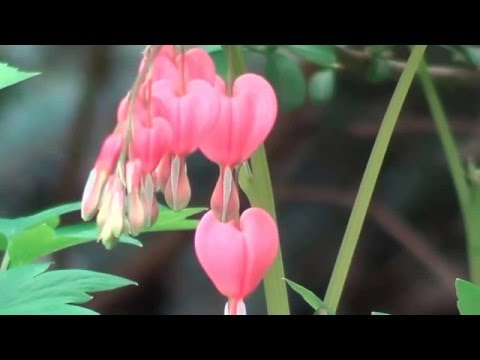

Watch this video on YouTube
After flowering
Seed collection
Experts do not recommend collecting the seeds of the dicentra grown in the middle lane. The fact is that in such conditions they may not ripen. But even ripe seeds have a very low germination capacity.
Preparation for wintering
In autumn, the part of the plant that rises above the soil must be cut off almost to the surface of the soil. The remaining stumps should be 3 to 5 centimeters high. Although this plant is resistant to frost, it still needs shelter for the winter. To do this, sprinkle it with a layer of peat from 5 to 8 centimeters thick. It is not necessary to make a thicker layer, otherwise the root system may begin to rot.
Types and varieties of dicentra with photos and names
Dicentra excellent (Dicentra eximia), or exceptional dicentra, or excellent
The western regions of North America are considered its homeland. Such a perennial reaches a height of only 20 centimeters. Fleshy leafless shoots. Finger-divided leaf plates consist of small lobes, while they are part of lush basal rosettes. The diameter of the pink flowers is about 25 mm, they are part of the arcuate inflorescences that have the shape of a brush and reach a length of 15 centimeters. It begins to bloom in the third decade of May, while the duration of flowering is equal to three months. This plant is highly resistant to frost (withstands up to minus 35 degrees), however, it is recommended to sprinkle the soil surface with a layer of mulch in autumn. It has been cultivated since 1812. There is a white-flowered form.
Dicentra beautiful (Dicentra formosa)
The species came to European countries from British Columbia. There, the plant can be found from central California to humid forests. The height of the bush is about 0.3 m. Green, palmate-separated leaf plates have a slightly bluish seamy surface. They have long petioles and are part of the rosette. The length of the inflorescences is from 10 to 15 centimeters. They consist of small pinkish-purple flowers with a diameter of 20 mm. Flowering begins in the last days of May and lasts until autumn.They have a high winter hardiness, but still need shelter for the winter. Cultivated since 1796
Popular varieties:
- Aurora... The petals located at the bottom are white in color, and at the top they have a light pink tint next to the peduncle.
- King of Hearts... Bright pink flowers and bluish light blue leaf plates.
This species has a subspecies - oregano dicenter. It is endemic to California and southwestern Oregon. Flowers are deep pink or white-cream with pinkish rime. The Alba form has white flowers.
Dicentra nodular (Dicentra cuccularia)
Originally from eastern North America from the states of Oregon and Washington. The rhizome contains small nodules. Greenish-gray thinly dissected leaf plates create pillows from rosettes. The height of the peduncles is about 0.3 m, they have white flowers with very long spurs. Often this species is grown at home. This species has a Pittsburgh cultivar, its flowers are pink. Recently, a form with lemon yellow flowers has appeared.
Dicentra golden-flowered (Dicentra chrysantha)
The homeland of this species is Mexico, and also the slopes of California (at an altitude of 1700 meters). The height of the bush can vary from 0.45 to 1.52 meters. Flowering begins in the second half of the spring and lasts until the first autumn days. The flowers are deep yellow and have 2 unusually curved petals. When grown in a garden, such a plant is whimsical, in natural conditions it grows rapidly in places of fire.
Dicentra one-flowered (Dicentra uniflora)
In nature, you can meet in Idaho, in northern Utah, and in North America from the Sierra Nevada to Washington. Such a plant is still popularly called the "ox's head" as it has an unusual shape. The appearance of single flowers occurs in February – July, while the length of the peduncles is only 10 centimeters. Separately from the peduncles, feathery leaf plates grow. This type is quite effective, but it is very difficult to care for it.
Even dicenters are sometimes cultivated: few-flowered, whitish-yellow and Canadian.
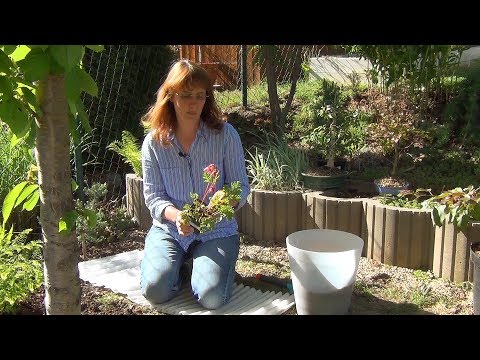

Watch this video on YouTube

